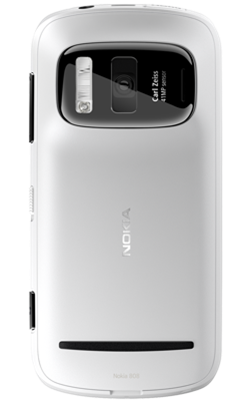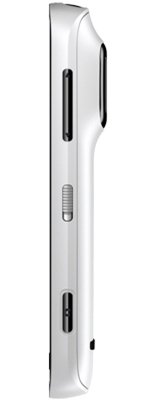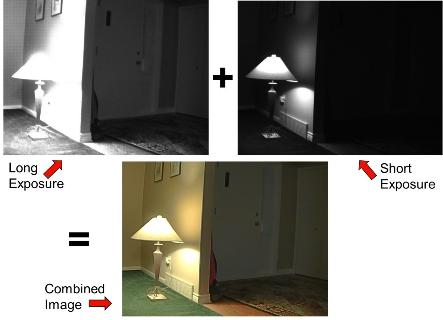[Note: This article used inputs from the following site’s – http://www.arstechnica.com – article: Innovation or hype? Ars examines Nokia’s 41 megapixel smartphone camera]
Introduction
Nokia recently announced a 41MP (MegaPixel) camera on a smartphone, the Nokia 808 PureView. The first response of consumers is “Amazing!!!”, while that of camera cognoscenti is “Marketing hype!!!”. The fact that a smartphone, with a retail price of less than Rs. 30,000/-, can boast of a sensor with as many pixels as an entry-level, medium-format digital SLR (DSLR) camera, which can cost anything upwards of Rs. 4,00,000/-, is baffling, to say the least; especially given the difference in size between a typical smartphone and a typical DSLR.
So, where’s the catch? And, if there isn’t a catch, why can’t security professionals have access to IP surveillance cameras featuring such high resolutions, at a similar cost and in as compact a package? This tech. brief looks at the technical details behind the Nokia 808 PureView and the implications for mid-level image capture devices in future.
Deciphering 41MP
Until a couple of years back, there was a megapixel race among compact digital camera vendors, to deliver the highest megapixel count in a camera. Thankfully, that race is no longer taken seriously, what with the realisation that “… 6 megapixels is widely quoted as the resolution beyond which viewers fail to register a significant improvement in image quality”. An October 2009 Tech. Brief – The Megapixel Myth – More is Always Better [Part I & Part II] – details the reasons why more megapixels do not necessarily translate to better quality images.
Under the circumstance, the utility of Nokia’s 41MP camera on the Nokia 808 PureView needs to be questioned. There are three novel components to the 41MP camera:
Large Sensor
The Nokia 808 PureView uses a 1/1.2″ sensor, extremely large when compared to sensors used on smartphone (typically 1/3.2″), and relatively large even when compared to sensors used on megapixel surveillance cameras (1/3″ and /2″).
The 1/1.2″ sensor translates to a size of 10.67 mm x 8.0 mm, and an area of 85.3 mm2: an almost 6-fold increase over traditional smartphone camera sensors and 4 to 5-fold increase over megapixel surveillance camera sensors.
High Resolution
As already mentioned several times so far, the sensor supports a resolution of 41MP. On a sensor area of 85.3 mm2, this resolution translates to a pixel size of approximately 2.0 µm (the pixel size is actually 1.4 µm): not quite the favoured thumb-rule (for threshold pixel size, for good quality images) of > 3.0 µm; but, then again, not too bad either, for all those extra megapixels. In comparison, the pixel size on the well reviewed iPhone 4S camera sensor is 1.4 µm, while the pixel size on the sensor of a WDR megapixel surveillance camera is in the region of 4.2 µm.
Related Accessories
Large sensors require large lenses, and the Nokia 808 PureView comes with a relatively humungous (by smartphone standards) lens. In addition, the flash on the Nokia 808 PureView is a bulky xenon flash tube.
The total package translates to significant smartphone real-estate, as can be seen from the images below.
  |
| Figure 1: The Nokia 808 PureView camera occupies significant smartphone real-estate Credit: Nokia http://www.nokia.com |
What is interesting is how Nokia uses the 41MP available on the sensor. There are two facets to the unique use of the sensor:
Oversampling
The Nokia 808 PureView is a 5MP camera by default. In this default setting, each pixel in the image derived from approximately 8 pixels in the sensor. This feature, called oversampling (or pixel-binning), helps reduce noise, and increase sharpness and colour accuracy; thus making up for the relatively small pixel size on the sensor. But, if a bigger pixel size could deliver the same visual results, why not just keep the resolution permanently at 5MP and always exploit the advantages of oversampling?
 Lossless Digital Zoom
Lossless Digital Zoom
The reason for that is a feature called lossless digital zoom. Digital zooms on cameras “crop and resize” the image, typically resulting in blurry and pixelated images. This is because interpolation is used to fill in the extra pixels, required when a smaller part of the image is made larger. In the case of the Nokia 808 PureView, given that the sensor’s native resolution is 41MP, at a default 5MP resolution, the image can be digitally zoomed to 3x without loss of detail, since the camera is now recording images without any oversampling. Effectively, the Nokia 808 PureView camera delivers the visuals of a camera with a 3x optical zoom.
 |
| Figure 2: Shot with a Nokia 808 PureView smartphone Credit: Nokia http://www.nokia.com |
Lessons for Surveillance Cameras
Nokia’s rather unique implementation of a high resolution sensor on a smartphone camera – all the while trying to stay within the budgetary and real-estate expectations of smartphone users – has lessons and cautions for surveillance camera users and vendors.
Mid-Fidelity, High-Resolution, instead of High-Fidelity, Mid-Resolution
Like CPU cores, other silicon too is getting cheaper and simpler to produce; provided it isn”t at the cutting edge of technology (high speed-low power, high pixel size, high dynamic range, etc.). Surveillance camera vendors will need to look at using sensors produced for smartphones (mid-fidelity and high-resolution) instead of designing products around surveillance-specific sensors (high-fidelity and mid-resolution).
A mid-fidelity smartphone sensor SKU will have sufficiently high volumes to ensure economies of scale, and thus enable a surveillance camera vendor to design a megapixel indoor surveillance camera at a cost not far off from that of a high-end analog CCTV camera.
Intelligent Edge-Devices
With mid-fidelity sensors, there is a fair amount of image processing work and optimisation that needs to be done, for which computing power is essential. Computing is getting cheaper too, and surveillance camera vendors should look at going the way of smartphone vendors: churning out dual-core or quad-core hardware, while waiting for software to deliver the fine-tuned image that the sensor is incapable of delivering.
Intelligent edge-devices need to be the norm, as far as surveillance cameras are concerned, and this should be the message users pass on to surveillance camera vendors. Such devices, with built-in storage, preclude the necessity for a back-end VMS (Video Management System) infrastructure, and allow users to directly access the device and view recordings.
Capability Limits
The Nokia 808 PureView camera sensor does not do well in low-light conditions, chiefly because it is a Front-Side Illumination (FSI) sensor. BSI (Back-Side Illumination) sensors deliver superior low-light performance. However, high-resolution sensors featuring BSI are not currently available.
There will always be a market for specialised surveillance sensors: mainly for low-light and high-contrast lighting conditions. A smartphone sensor cannot deliver the level of detail of such a high-fidelity surveillance sensor. Users have to be clear about the capabilities of each category of sensors, so that there is no false expectations when opting for a mid-fidelity (low-cost) sensor solution.
 |
| Figure 3: Sensors are more than just lots of megapixels: a WDR sensor Credit: OmniVision Technologies Inc. http://www.ovt.com |
Conclusion
Can surveillance camera vendors do a “smartphone” to the traditional IP video surveillance camera, bringing its prices down to the level of analog CCTV cameras? The day when a 41MP IP video surveillance camera will be available for around the price point of a high-end analog CCTV camera may not be not far off, looking at the trail blazed by Nokia in its recent smartphone introduction.



